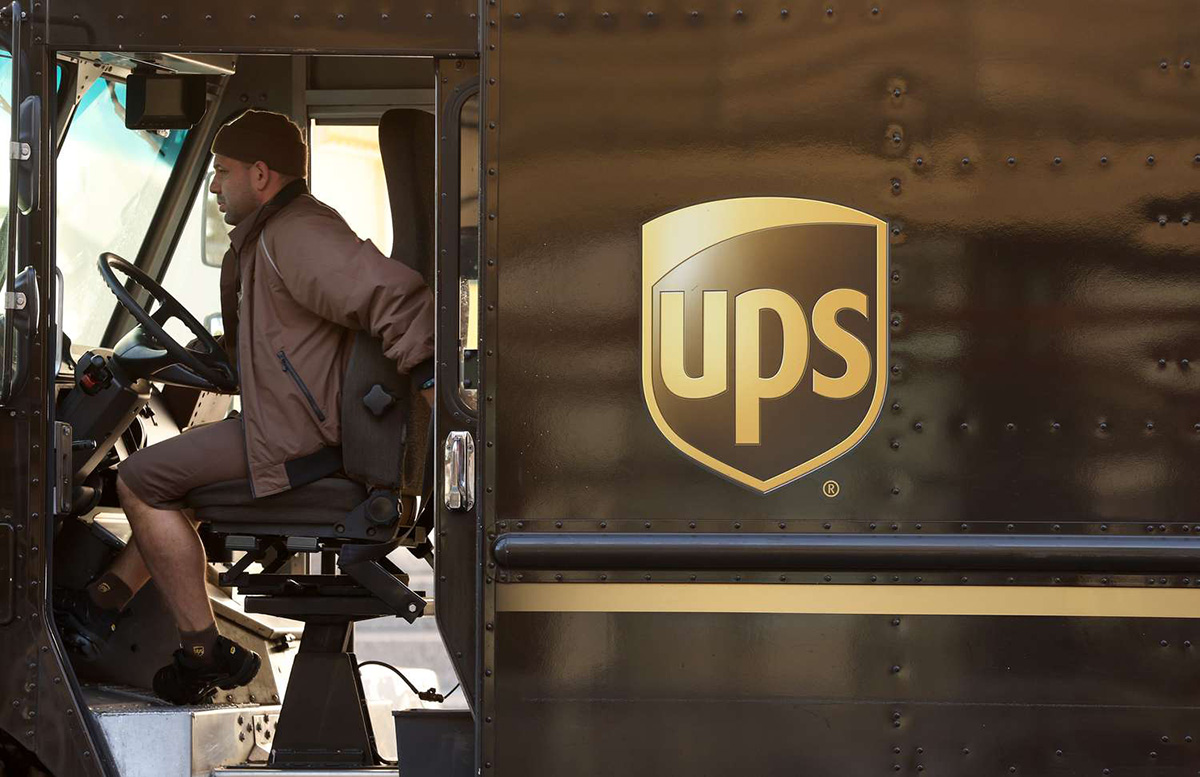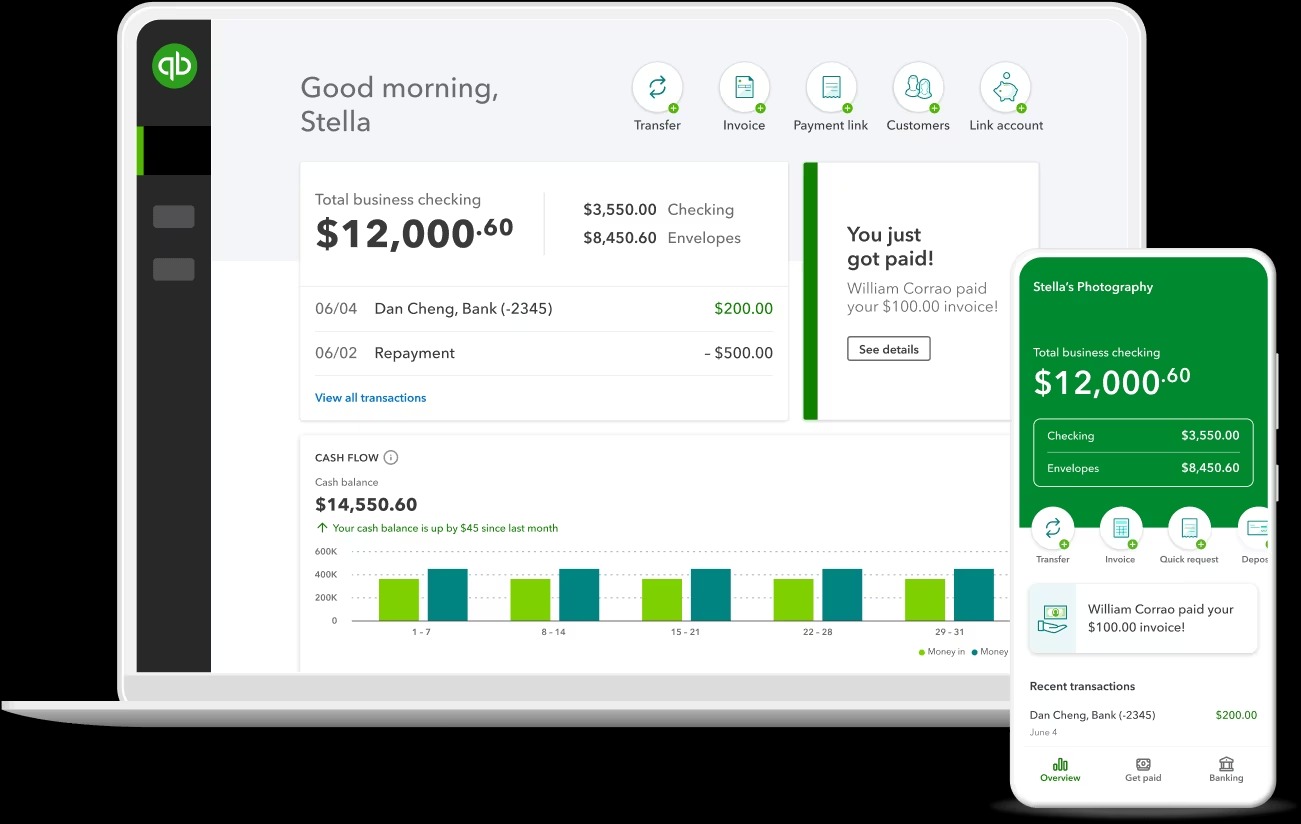

Finance
How Much Does UPS Charge For Insurance
Published: November 21, 2023
Find out how much UPS charges for insurance and protect your valuable shipments. Compare rates and coverage options to secure your finances.
(Many of the links in this article redirect to a specific reviewed product. Your purchase of these products through affiliate links helps to generate commission for LiveWell, at no extra cost. Learn more)
Table of Contents
Introduction
Welcome to our comprehensive guide on UPS insurance rates and coverage. If you are shipping valuable items through UPS, it’s crucial to protect your investment in case of damage, loss, or theft during transit. UPS offers insurance options to ensure peace of mind and financial safeguards for your shipments.
Understanding how UPS insurance works and the factors that influence insurance rates can help you make informed decisions and select the right coverage for your needs. In this article, we will explore the various aspects of UPS insurance, including the types of coverage available, how to calculate insurance costs, and tips for reducing insurance expenses.
Whether you are a business owner shipping high-value products or an individual sending valuable personal items, having a clear understanding of UPS insurance can provide you with the necessary information to protect your shipments and mitigate financial risks.
In the following sections, we will delve deeper into the nuances of UPS insurance rates and coverage, helping you navigate through the process effectively.
Understanding UPS Insurance
UPS insurance is a service offered by UPS to provide coverage for the value of your shipments. It acts as a safety net, protecting you from potential financial losses in the event of damaged, lost, or stolen items during transit.
When you ship a package through UPS, it is automatically covered by limited liability coverage, which provides some level of protection. However, this coverage might not be sufficient for high-value items or shipments with unique requirements.
UPS offers additional insurance options that allow you to declare a higher value for your shipment and purchase insurance coverage accordingly. This will provide you with greater financial protection and peace of mind, knowing that you are covered in case of unforeseen circumstances.
It’s important to note that UPS insurance is separate from the carrier’s liability coverage. While UPS assumes liability for lost or damaged packages under their liability coverage, the maximum amount they will reimburse is usually limited. By opting for UPS insurance, you can choose the level of coverage that suits the value of your shipment.
UPS insurance is available for domestic and international shipments. The coverage extends to various types of packages, including parcels, documents, and freight shipments. However, there are certain restrictions and limitations on the types of items that can be insured, such as restricted goods, hazardous materials, and perishable items.
It’s crucial to review UPS’s terms and conditions for insurance coverage to ensure that your shipment meets the eligibility criteria and that you understand the limitations and exclusions.
Next, let’s explore the factors that can affect UPS insurance rates and how you can calculate the cost of insurance for your shipments.
Factors Affecting UPS Insurance Rates
Several factors come into play when determining UPS insurance rates for your shipments. These factors influence the level of risk associated with transporting your package and thus affect the cost of insurance coverage. It’s important to be aware of these factors to understand how they impact your insurance rates.
1. Declared Value: The declared value is the maximum amount you can claim for your shipment in case of loss, damage, or theft. Naturally, higher declared values will result in higher insurance rates since UPS assumes a greater liability for the higher value of the package.
2. Package Value: The actual value of the package plays a significant role in determining the insurance rates. The higher the value of the package, the higher the insurance rates since there is a greater financial risk associated with transporting expensive items.
3. Package Size and Weight: Larger and heavier packages generally have higher insurance rates. This is because oversized and overweight packages are more susceptible to damage or mishandling during transit.
4. Destination: The location to which your package is being shipped can impact insurance rates. The risk level associated with certain destinations, such as regions with high theft or political instability, might result in higher insurance rates.
5. Transportation Mode: The mode of transportation used for shipping, whether it’s ground or air, can affect insurance rates. Air transportation, for example, often involves more handling and transfers, leading to a higher risk of damage or loss.
6. Special Handling Requirements: If your package requires special handling due to its fragility, sensitivity, or unique characteristics, it might lead to higher insurance rates. This is because additional care and precautions are needed to ensure the safe transportation of such items.
7. Past Claim History: UPS takes into account your shipment’s claim history when determining insurance rates. If you have a history of filing frequent claims, it might result in higher insurance rates as it suggests a higher risk associated with your shipments.
It’s important to note that these factors can vary depending on your specific shipping situation. It’s recommended to consult with UPS or a shipping expert to get a clearer understanding of how these factors apply to your shipments and how they influence insurance rates.
In the next section, we will explore the different types of UPS insurance coverage options available to you.
Types of UPS Insurance Coverage
UPS offers different types of insurance coverage options to suit the specific needs and requirements of your shipments. Understanding these coverage options is essential for choosing the right level of protection for your packages. Let’s explore the different types of UPS insurance coverage available:
- Declared Value Coverage: This is the basic coverage provided by UPS for all shipments. It provides limited liability coverage based on the declared value of the package. The maximum amount of coverage varies depending on the shipping destination and package type. However, this coverage may not be sufficient for high-value items as the reimbursement may be limited.
- UPS Declared Value Enhancement: This coverage allows you to increase the declared value of your package beyond the standard limits provided by UPS. By opting for this enhancement, you can ensure that your package is adequately covered up to the desired value in case of loss, damage, or theft.
- UPS Proactive Response Secure: This is a premium insurance option offered by UPS for high-value shipments. It provides comprehensive coverage, including protection against loss, damage, theft, and even hidden damage. UPS Proactive Response Secure includes proactive monitoring, risk mitigation, and enhanced claims management services for added protection and peace of mind.
It’s important to carefully consider the value and nature of your packages when selecting the appropriate UPS insurance coverage. It’s recommended to consult with UPS or an insurance specialist to determine the best coverage option for your specific needs.
Now that we have covered the types of UPS insurance coverage, let’s move on to the next section, where we will discuss how to calculate UPS insurance costs for your shipments.
How to Calculate UPS Insurance Costs
Calculating UPS insurance costs for your shipments involves considering several factors that contribute to the level of risk associated with transporting your packages. Understanding these factors and how they impact insurance rates can help you estimate the cost of insurance coverage. Here is a breakdown of the steps involved in calculating UPS insurance costs:
- Determine the Declared Value: Start by determining the maximum amount you want to declare for your shipment. This should reflect the total value of the goods being shipped.
- Review UPS Insurance Rate Tables: UPS provides rate tables that outline the insurance rates based on the declared value of the package. These rate tables can be found on the UPS website or by contacting UPS directly.
- Identify Additional Insurance Costs: Depending on the type of coverage you select, there may be additional fees associated with it. For example, UPS Proactive Response Secure comes with premium services and costs. Be sure to factor in any additional fees when calculating insurance costs.
- Consider Other Factors: While the declared value is a primary factor in determining insurance costs, it’s essential to consider other factors such as package size, weight, destination, and any special handling requirements. These factors may influence the overall insurance rate.
- Calculate the Insurance Cost: Once you have gathered all the necessary information, you can calculate the UPS insurance cost by multiplying the declared value by the applicable insurance rate or rates. Additionally, add any extra fees associated with the selected coverage option.
Keep in mind that UPS insurance rates can change periodically, so it’s recommended to check for updated rate tables or consult with UPS directly to ensure accurate calculations.
In the next section, we will discuss how you can compare UPS insurance rates to find the most suitable option for your shipments.
Comparing UPS Insurance Rates
When it comes to comparing UPS insurance rates, it’s important to consider multiple factors to find the most suitable option for your shipments. By evaluating various aspects of insurance coverage, you can make an informed decision and ensure that you are getting the best value for your money. Here are some key points to consider when comparing UPS insurance rates:
- Coverage Limits: Compare the coverage limits offered by different insurance options. Determine if the declared value of your package falls within the coverage limits and if it provides sufficient protection for your specific needs.
- Insurance Rates: Look at the insurance rates for different coverage options. Consider the declared value of your shipment and calculate the insurance cost based on the rates provided by UPS. Compare these costs to determine which option offers the most competitive rate.
- Add-On Services: Some insurance options might come with additional services, such as proactive monitoring, enhanced claims management, or risk mitigation. Consider if these services are valuable to you and if their inclusion justifies the higher insurance rates.
- Claim Process: Evaluate the claim process for each insurance option. Look for ease of filing a claim, responsiveness, and the overall efficiency of the claims handling procedure. A smooth claim process is essential in case you need to recover the value of a lost or damaged package.
- Customer Reviews: Research customer reviews and feedback regarding UPS insurance options. Pay attention to the experiences of others who have used the coverage options to get an idea of customer satisfaction and the reliability of the service.
By considering these factors, you can make an informed decision when comparing UPS insurance rates. It’s important to remember that insurance costs should not be the sole determining factor. Instead, focus on finding the coverage option that best aligns with the value of your shipments and provides the necessary level of protection.
In the next section, we will provide some helpful tips for reducing UPS insurance costs.
Tips for Reducing UPS Insurance Costs
Managing shipping costs is a priority for many businesses and individuals. When it comes to UPS insurance, there are some strategies you can implement to help reduce insurance costs without compromising the protection of your shipments. Consider the following tips to lower your UPS insurance costs:
- Evaluate Declared Value: Carefully assess the declared value of your packages. Avoid overestimating the value, as this will result in higher insurance rates. Ensure that the declared value accurately represents the actual worth of the items being shipped.
- Minimize Package Size and Weight: Larger and heavier packages are associated with higher insurance rates. Whenever possible, minimize the size and weight of your packages to reduce insurance costs. Optimize packaging to ensure protection while minimizing dimensions and weight.
- Opt for Cost-Effective Insurance Options: UPS offers different types of insurance coverage with varying rates. Consider your specific needs and choose the option that provides adequate protection at the most reasonable cost. Assess the value of your shipments and the level of risk to determine the appropriate coverage.
- Use Proper Packaging: Properly packaging your items is essential for minimizing the risk of damage during transit. Use sturdy materials, cushioning, and secure packaging techniques to protect the contents. By reducing the possibility of damage, you can potentially save on insurance costs.
- Implement Risk Management Practices: Implementing effective risk management practices can help reduce the likelihood of damage or loss during transit. This can include proper labeling, addressing, and documentation, as well as adhering to UPS packaging guidelines. By minimizing the risk, you can potentially lower your insurance rates.
- Bundle Shipments: Consolidating multiple items into one shipment whenever possible can help reduce overall insurance costs. Instead of sending several separate packages, combining them into one shipment can result in lower insurance rates.
- Consider Alternate Insurance Providers: While UPS offers insurance options, it’s also worth exploring other insurance providers. Compare prices and coverage options from different providers to find the most cost-effective solution. However, ensure that the alternate insurance provider meets the necessary requirements for your shipments.
By implementing these tips, you can potentially reduce UPS insurance costs while still ensuring the protection of your shipments. Remember to evaluate your specific shipping needs and adjust your insurance coverage accordingly.
In the following section, we will provide answers to some frequently asked questions about UPS insurance.
Frequently Asked Questions about UPS Insurance
Here are some commonly asked questions regarding UPS insurance:
- 1. Is UPS insurance required for all shipments?
- 2. How do I file a claim for a lost or damaged package?
- 3. Are there any items that cannot be insured by UPS?
- 4. Can I purchase insurance for international shipments?
- 5. Will UPS insurance cover the full declared value of my package?
- 6. Can I modify or add insurance to a package after it has been shipped?
- 7. Can I cancel UPS insurance for a shipment?
No, UPS insurance is not mandatory for all shipments. However, it is highly recommended, especially for high-value items or shipments with unique requirements. UPS provides limited liability coverage automatically, but additional insurance offers greater protection and peace of mind.
To file a claim for a lost or damaged package, you can initiate the process online using UPS’s claims management system. Provide all necessary documentation, including proof of value, proof of loss or damage, and any supporting documentation related to the shipment.
Yes, there are certain items that cannot be insured by UPS. Restricted goods, hazardous materials, perishable items, and specific high-value items like jewelry or artwork may have limitations or exclusions in terms of insurance coverage. It is important to review UPS’s terms and conditions or consult with UPS directly for clarity.
Yes, UPS insurance is available for both domestic and international shipments. The coverage extends to various types of packages and destinations. However, it’s important to review any specific restrictions or limitations that may apply to international shipments.
The coverage provided by UPS insurance will depend on the declared value and the insurance option you selected. You can choose the level of coverage based on the value of your package, but there may be limitations and maximum coverage amounts. It’s important to understand the terms and conditions of the insurance coverage you have chosen.
No, once a package has been shipped, you cannot modify or add insurance to it. It is essential to ensure that the declared value and insurance coverage are accurate before the package is dispatched.
Yes, you can cancel UPS insurance for a shipment before it is picked up or shipped. Contact UPS customer service or your designated UPS representative to request the cancellation.
If you have any further questions or concerns about UPS insurance, it is recommended to reach out to UPS directly for personalized assistance and guidance.
Now that we have addressed frequently asked questions, let’s conclude this guide in the next section.
Conclusion
In conclusion, UPS insurance is an essential service to consider when shipping valuable items. Understanding the various aspects of UPS insurance, such as coverage options, factors affecting insurance rates, and how to calculate insurance costs, can help you make informed decisions to protect your shipments.
By carefully evaluating your specific needs and considering factors like declared value, package size and weight, and destination, you can select the most suitable insurance coverage for your shipments. Comparing insurance rates, reviewing customer feedback, and implementing risk management practices will also contribute to cost-effective insurance solutions.
Remember, UPS insurance provides an additional layer of protection beyond the carrier’s liability coverage. It is not mandatory for all shipments, but it is highly recommended for valuable items or shipments with unique requirements.
Lastly, it’s important to review and understand the terms and conditions of UPS insurance, including any limitations or exclusions that may apply to certain items or destinations. If you ever need to file a claim for a lost or damaged package, be prepared to provide the required documentation and follow UPS’s claim process.
By following the tips and guidelines provided in this guide, you can navigate the world of UPS insurance more confidently and secure your shipments from potential risks. Whether you are a business owner or an individual sending valuable items, UPS insurance offers peace of mind and financial protection for your shipments.














